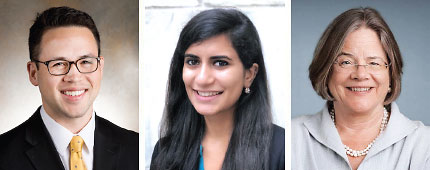Psychiatrists Advised to Better Recognize, Manage Longstanding Trauma in Patients
Abstract
Adverse childhood events impact numerous adults. This article is part of a series by APA’s Council on Advocacy and Government Relations.
While the COVID-19 pandemic and other recent events have highlighted the importance of mental health, we as a profession can still improve our awareness of one of the most universal and difficult elements of our work: trauma. As psychiatrists caring for children at a public city hospital, trauma exposure is an unfortunate feature of so many of our patients’ lives and extends to youth in more well-resourced settings as well. The frequency and severity of our patients’ traumatic experiences are further compounded by the degree to which these experiences are often misunderstood by our patients, their loved ones, and even their mental health professionals.
More than 20 years ago, the Adverse Childhood Experiences (ACE) Study published in the American Journal of Preventive Medicine firmly established the pervasiveness of childhood trauma, with more than half of respondents experiencing an adverse childhood experience. The ACE study also illustrated trauma’s association with adult outcomes including depression, suicidality, anxiety, substance use, and chronic medical conditions. Subsequent literature confirmed the prevalence of childhood trauma in community samples as well as its heightened occurrence in structurally disadvantaged populations such as those in inpatient psychiatry, juvenile justice, and child welfare settings.
However, despite knowing that trauma is common and associated with many of our most commonly treated conditions, the contribution of trauma to our patients’ mental health is frequently missed or underemphasized, particularly in children. Worse, many traumatized youth are misdiagnosed as suffering from bipolar or psychotic disorders, which are notably rare in adolescents and extremely rare in children, and they are subsequently mistreated with mood stabilizers or antipsychotics.
There are reasons for this confusion: common signs and symptoms of chronic, severe, and complex trauma include dysregulated behavior, labile affect, dissociation, and an unstable sense of self. An inability to recognize these cardinal symptoms of complex trauma, in the context of the failure of routine screening for traumatic exposure, leads to errant diagnoses of bipolar or psychotic disorders.
Our diagnostic criteria are also culpable. Changes in the early 2000s that allowed irritability and mood lability to replace sustained euphoria in pediatric bipolar disorder were associated with a significant increase in bipolar diagnoses. There was a subsequent attempt at course correction with the introduction of disruptive mood dysregulation disorder (DMDD) in DSM-5. Though the advent of DMDD has been associated with a decrease in bipolar diagnoses, it actually corresponded with an increase in the use of antipsychotics and polypharmacy, according to a study in the March 1 Journal of the American Academy of Child and Adolescent Psychiatry. This is especially troubling given the harmful side effects associated with sustained antipsychotic use, the structural vulnerability of the low-income and minority youth most likely to be subject to these mistakes, and the lasting stigma such prescriptions can exert on future care. In comparison, treatments that address underlying posttraumatic stress disorder, depression, and attention-deficit/hyperactivity disorder such as therapy, SSRIs, stimulants, and alpha-agonists would often be more effective for these youth while maintaining a much more benign side-effect profile.
These issues are also cause to reconsider our formulations in adults. Patients from vulnerable communities with prior diagnoses such as schizoaffective disorder or “polysubstance use” may be better understood as survivors of trauma with a proper evaluation. Rather than using a parent or family member’s reported bipolar history as support for a similar diagnosis, consider that this too may be indicative of intergenerational trauma rather than hereditary mania.
In Trauma and Recovery (Basic Books, 1997), Dr. Judith Herman argues that the unspeakable nature of traumatic experiences predisposes us to collective denial when confronted by them. While trauma has begun to receive increasing attention in the popular sphere, it is imperative to our therapeutic duty as physicians and social role as mental health experts that we continually strive to better recognize and manage trauma and its sequelae in our patients. ■
The authors of this article are active in APA’s advocacy programs and urge you to consider becoming involved as well if you have not already done so. Now may be one of the most important times to communicate personally with your legislators and educate them about major mental health issues that they need to address. For more information visit Advocacy & APAPAC or email [email protected].




